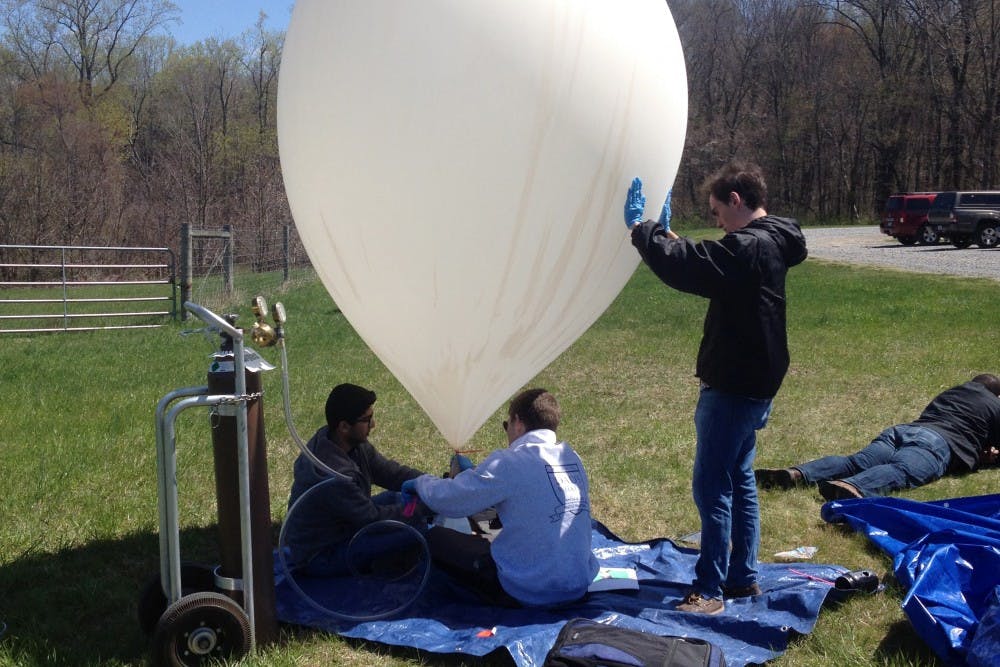For the Penn Aerospace Club, getting high in mid-April means sending a weather balloon into the stratosphere.
Two weeks ago, the Penn Aerospace Club launched a weather balloon 40,000 feet into space in hopes of winning the Global Space Balloon Challenge. They are just one of 291 teams representing 47 countries around the world. These teams around the globe have the opportunity to fly a balloon to the edge of space between April 10 and April 27, and they compete for prizes in various categories including highest altitude, best design and more.
While the Penn Aerospace Club only began their endeavors last year, they have high hopes to win in the “Best Experiment” category. The club’s experiment and payload teams collaborated to develop a payload that attaches and detaches from their balloon that measures the relationship between black mold population and radiation at various altitudes of the atmosphere. The communication team wrote software that enables GPS tracking and data feedback.
Despite their strong efforts, the team has had to overcome many challenges. Initially, the group was intimidated by the sheer size of the challenge. Furthermore, the communications team faced a few issues with software development. According to Wharton and Engineering sophomore Naman Mehrotra, upon their first launch in Allentown, Pa., they realized the readings were incorrect, the geofencing mechanism was down and their camera ran out of battery.
“Those kinds of technical things have been challenges for us, but our team has been working a lot over the past two weeks to fix them,” Mehrotra said. “We are hoping that everything will work out [during our next launch].”
They have also received funding from an aerospace company and guidance from Penn Mechanical Engineering professor and aerospace engineering expert Bruce Kothmann.
“Dr. Kothmann teaches a lot of mechanical engineering labs which are really hands on, so we decided that he would be the best adviser to help us for a project like this,” said Mehrotra.
Outside of tackling large-scale projects, the Penn Aerospace Club also enjoys recreational aircraft flying. One of the club members has a pilot’s license, and the other club members take advantage of it.
“Club members could go to an airport nearby and learn how to fly a plane. We had a couple trips last year,” Mehrota stated. “A lot of people think it’s difficult to fly, but surprisingly, it’s not. My first time in the cockpit I had the opportunity to actually fly the plane, and it was a really good first experience.”
In the future, the club hopes to continue to tackle large-scale projects, including building a small rocket. The club also hopes to continue to expand to include those interested in gaining aerospace and engineering experience.



